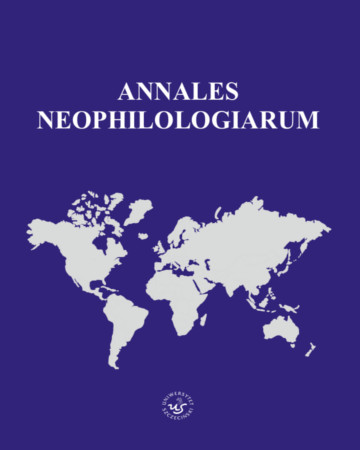





| Authors: |
Katarzyna
Rudkiewicz

Uniwersytet Szczeciński |
| Keywords: | trajector landmark path image schema conceptualisation image schema transformation |
| Data publikacji całości: | 2018 |
| Page range: | 18 (39-56) |
| 1. | Ayto, J. (1990). Bloomsbury Dictionary of word origin. London: Bloomsbury Publishing Ltd. |
| 2. | Bacz, B. (2002). On the image-schema proposals for the preposition po in Polish. Glossos Issue 3. Spring 2002. [online:] http://seelrc.org/glossos/issues/3/bacz.pdf. (15.01.2017). |
| 3. | Bacz, B. (2004). For the unity of meaning of the Polish verbal prefix za-. Lacus Forum, 31, 93–104. |
| 4. | Bańko, M. (2003). Słownik języka polskiego PWN. Pobrano z: http://sjp.pwn.pl/slowniki/mimo.html. (15.12.2016). |
| 5. | Baugh, A.C., Cable, T. (2005). A history of the English language. London: Routledge. |
| 6. | Długosz-Kurczabowa, K., Dubisz, S. (2006). Gramatyka historyczna języka polskiego. Warszawa: Wydawnictwo Uniwersytetu Warszawskiego. |
| 7. | Evans, V., Tyler, A. (2005). Rethinking English “Prepositions of movement”: the case of to and through. W: H. Cuyckens, W. de Mulder, T. Mortelmans (red.), Adpositions of movement (s. 247–270). Amsterdam: John Benjamins. |
| 8. | Hampe, B. (2005). Image schemas in cognitive linguistics. Introduction. W: Hampe, B., Grady, J. (red.), From perception to meaning: image schemas in cognitive linguistics (s. 1–12). Berlin: Mouton de Gruyter. |
| 9. | Johnson, M. (1987). The body in the mind. The bodily basis of meaning, imagination, and reason. Chicago: Chicago University Press. |
| 10. | Lakoff, G., Johnson, M. (1987). Women, fire and dangerous things. What categories reveal about the mind. Chicago: The University of Chicago Press. |
| 11. | Lakoff, G., Johnson, M. (2007). Metaphors we live by. Chicago: The University of Chicago Press. |
| 12. | Langacker, R.W. (1987). Foundations of cognitive grammar. Theoretical prerequisites. Stanford: Stanford University Press. |
| 13. | Langacker, R.W. (1991). Foundations of cognitive grammar. Descriptive application. Stanford: Stanford University Press. |
| 14. | Onions, C.T., Friedrichsen, G.W.S., Burchfield, R.W. (1985). The Oxford dictionary of English etymology. Oxford: Oxford University Press. |
| 15. | Przybylska, R. (2002). Polisemia przyimków polskich w świetle gramatyki kognitywnej. Kraków: Universitas. |
| 16. | Przybylska, R. (2006). Schematy wyobrażeniowe a semantyka polskich prefiksów czasownikowych do-, od-, prze-, roz-, u-. Kraków: Universitas. |
| 17. | Rudkiewicz, K. (2016). Cognitive explorations into the category schema of “ for”. Newcastle upon Tyne: Cambridge Scholars Publishing. |
| 18. | Rudzka-Ostyn, B. (2000). Z rozważań nad kategorią przypadka. Kraków: Universitas. |
| 19. | Skeat, W.W. (1963 [1879–1882]). An etymological dictionary of the English language. Oxford: The Clarendon Press. |
| 20. | Tabakowska, E. (2001). Kognitywizm: Obrazki z polskiej sceny. Glossos Issue 1. Spring 2001. Pobrano z: https://slaviccenters.duke.edu/uploads/media_items/tabakowska.original.pdf, (15.01.2017). |
| 21. | Talmy, L. (2000). Toward a cognitive semantics. T.1. The MIT Press. |